This Valentine’s Day, we’d like to highlight some forest species that breed this time of year. You might observe these birds or mammals courting in your backyard or out in Penn’s woods.
Many species breed multiple times a year, taking advantage of plentiful resources, or some breed only once, ensuring young are mature by next winter.
Grey Squirrels
Gray squirrels breed in late winter to early spring, and often have another litter later in the summer. Males compete for females’ attention, and females can mate with multiple males.
Young can be born in late February through April. In the western and southern parts of Pennsylvania, you might see fox squirrels, whose mating season is in January. Kits are born in late February or early March.
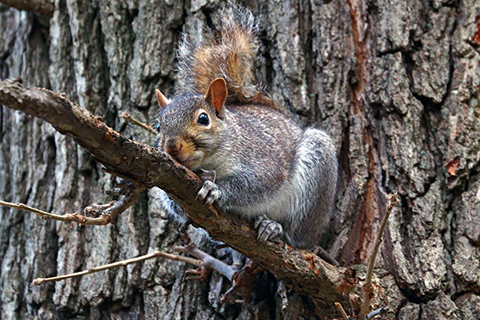
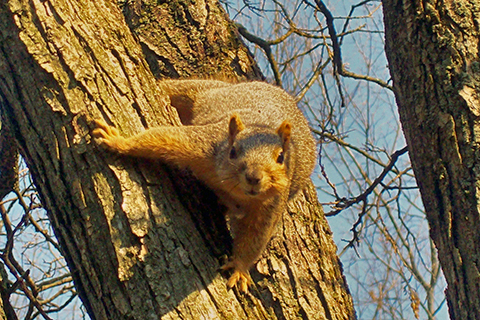
Top to Bottom: Gray squirrel, fox squirrel (Photo: Dmitri Bochkov, public domain)
Eastern Cottontail Rabbit
The eastern cottontail rabbit is also feeling amorous this time of year. Cottontails start breeding in February or March and continue to September. They are promiscuous, meaning males and females have many mates.
Litters are born March through September, with an average of five young. Rabbits born in early spring can mate by late summer of the same year.
The snowshoe hare, cottontails’ cousin of the north woods, begins courtship in early March. Males use their hind feet to fight rivals for females.
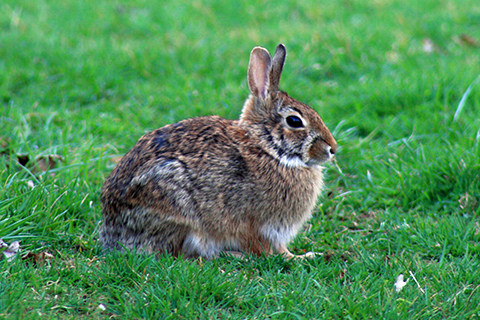
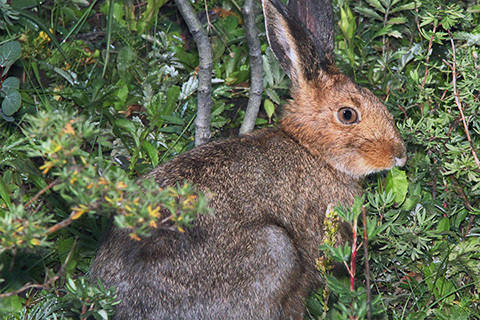
Top to Bottom: Eastern cottontail rabbit, snowshoe hare (Photo: Alan Schmierer, CC0 1.0 Public Domain)
Great Horned Owls
Great horned owls have the earliest breeding season of all the owls in Pennsylvania. They mate as early as December or January, staking out breeding territory by hooting to each other. Great horned owls are believed to mate for life.
Nests are made of repurposed crow, heron, or hawk nests, or in tree cavities. The mated pair works together to clean out old nest material. The female then lines it with her feathers before she lays two to three eggs in February.
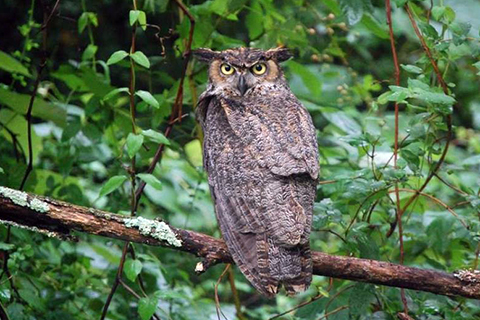
Great horned owl
Bald Eagle
Another early breeder and species that mates for life is the bald eagle. Nesting and egg laying occurs in February, and nestlings hatch in mid-April to mid-May.
Eagles often return to the same nest site year after year, which may cover an area greater than one square mile and include more than one nest.
Courtship begins in the winter and is important for building bonds between pairs. This can include sharing nest-building duties as well as dramatic, high-speed acrobatics while twirling with locked talons.
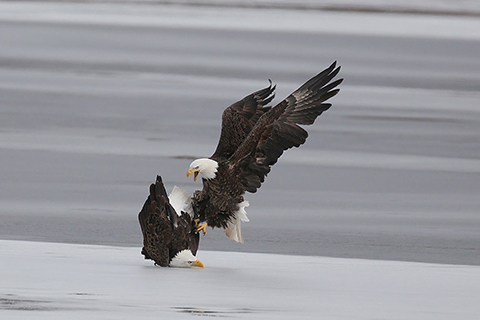
Eagle courtship
Watch a new eagle family on Pennsylvania Game Commission’s Eagle Cam:
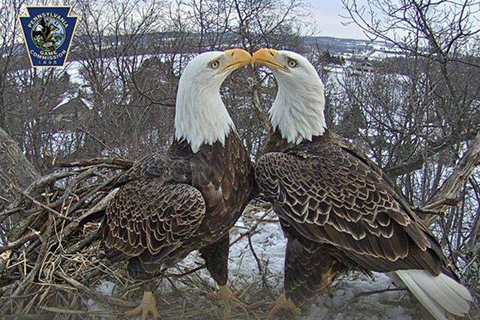
Bald eagle pair (Photo: PA Game Commission’ Eagle Cam)
Learn more about wildlife found in Pennsylvania forests at the Pennsylvania Game Commission website.